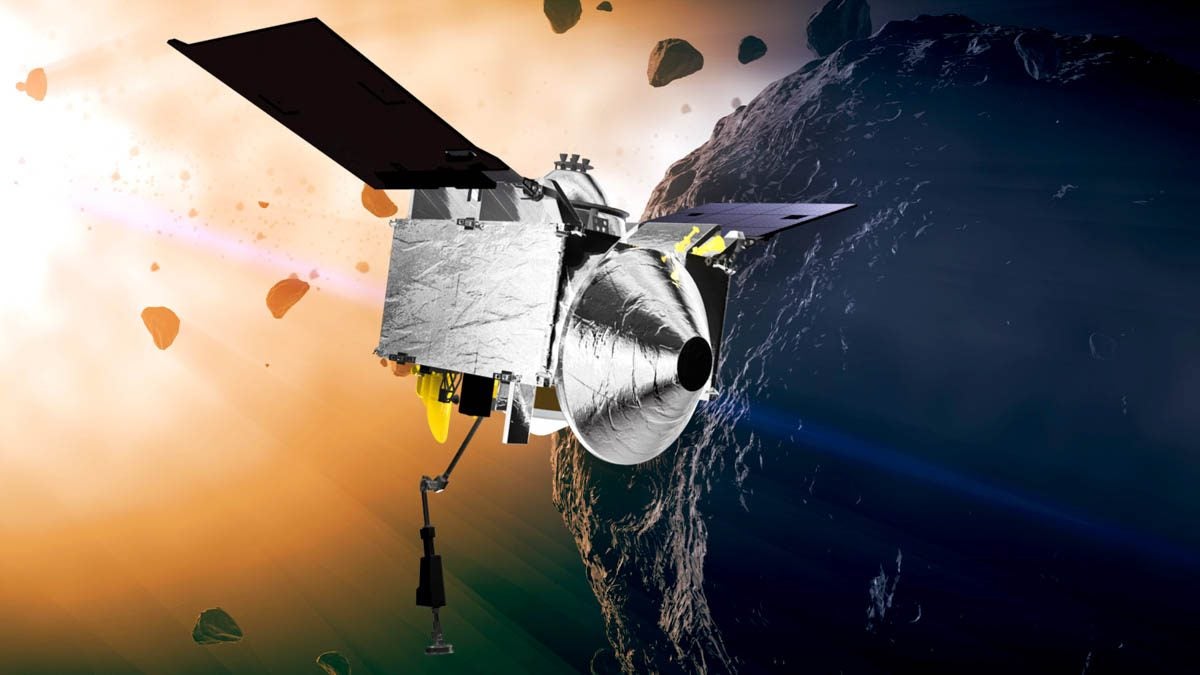Wild temperature fluctuations, dehydration of clay minerals and impacts on the surface of asteroid Bennu could all be reasons why the asteroid is ejecting particles into space.
The team leading NASA’s OSIRIS-REx mission to the near-Earth asteroid this month published a study in the journal Science that describes three potential mechanisms for the activity on Bennu. The team discovered the unexpected ejections in January, shortly after the spacecraft achieved orbit around the asteroid.
University of Arizona Professor Dante S. Lauretta leads the OSIRIS-REx mission, which launched from Kennedy Space Center in September 2016. Its goal is to collect a sample of the asteroid and return to earth by 2023. The spacecraft is expected to perform the touch-and-go maneuver on Bennu in 2020. It is NASA’s first mission to retrieve a sample.
UCF astrophysicist Humberto Campins is part of the imaging team on the mission. He says the team has spent time looking at plumes of particles ejected from the surface, because as a potentially hazardous asteroid it is imperative that scientists understand how it behaves.
The Science article, authored by Lauretta and C. W. Hergenrother with dozens of co-authors outlines three mechanisms, which not only suggest how the ejection occurs, but also provides a snapshot of the bizarre nature of the asteroid.
Particles could be launching off the asteroid’s surface because of drastic fluctuations in temperature on the asteroid. Bennu reaches temperatures of about 400 degrees Kelvin (260.3 degrees Farenheit) at noon and then sees drops of about 150 degrees during its night. The asteroid rotates from day to night every 4.3 hours.
Another potential reason for the ejection of particles could be tied to the dehydration of clay minerals on the surface of the asteroid. The surface is covered with boulders of varying sizes that are warmed up by the sun and can crack or exfoliate.
Or the ejections could all be related to active impacts on the surface. Because Bennu only has 1/100,000th of the gravity of Earth, it requires very little energy to launch particles into space – about the amount it takes to break a cracker, Campins says.
“It is important for us to know how it works for a very practical reason,” Campins said. “If we need to deflect it away from Earth, in say 160 years, we will need to know exactly how to do it, so we need to know everything about the asteroid. But there’s also a scientific reason. Bennu was selected because we suspect it has primitive organic material on it. That can help us answer questions about the formation of life on Earth. This unexpected observation [of ejections] shows that we have so much more to learn.”
The team continues to collect and analyze data from Bennu to determine the best target site for the touch-and-go sample collection maneuver next year.
“This mission is a perfect moment in time,” Campins said. “The instruments available, the team of experts assembled and the orbit selected gave us this unique look at the asteroid that let us observe the particle-ejection events. Now the question is: Is Bennu unusual or is this happening on most other primitive asteroids and we’ve just never been in the right place to see it until now.”
Campins has spent his entire career chasing asteroids, comets and other celestial bodies. He conducts research at observatories around the world, including Arizona, Hawaii, Chile, France, Spain and Vatican City. In 2010, he headed the team that discovered water ice and organic molecules on the asteroid 24 Themis and later on 65 Cybele. It’s that expertise that led Lauretta to invite Campins to the OSIRIS-REx team in 2010.




